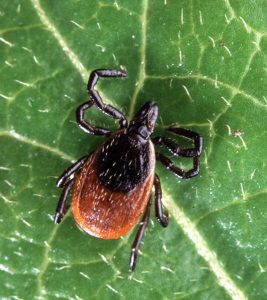-
Adopt
-
Veterinary Care
Services
Client Information
- What to Expect – Angell Boston
- Client Rights and Responsibilities
- Payments / Financial Assistance
- Pharmacy
- Client Policies
- Our Doctors
- Grief Support / Counseling
- Directions and Parking
- Helpful “How-to” Pet Care
Online Payments
Referrals
- Referral Forms/Contact
- Direct Connect
- Referring Veterinarian Portal
- Clinical Articles
- Partners in Care Newsletter
CE, Internships & Alumni Info
CE Seminar Schedule
Emergency: Boston
Emergency: Waltham
Poison Control Hotline
-
Programs & Resources
- Careers
-
Donate Now
 Amanda Lohin, DVM
Amanda Lohin, DVM
www.angell.org/emergency
emergency@angell.org
781-902-8400
MSPCA-Angell West, Waltham
Granulocytic anaplasmosis is a common tick-borne disease caused by a bacterial agent, Anaplasma phagocytophilum. This disease is regularly found in the Northeast, but is also found in the Midwest and along the West coast. The disease is carried and spread by deer ticks, which are the same ticks that carry and spread Lyme disease. Therefore, Anaplasma and Lyme disease are commonly diagnosed together as co-infections.
 A minimum tick feeding time of 24 hours is needed for the deer tick to transmit the infectious bacteria. The organisms infect white blood cells and can be detected anywhere from 4-14 days later. Therefore, the clinical signs are seen approximately 1-2 weeks after the tick bite. Aside from it affecting a particular white blood cell, it can cause a low platelet count. Though it is not known exactly how the platelets get affected, it can be a clue to the veterinarian of what is going on with the pet.
A minimum tick feeding time of 24 hours is needed for the deer tick to transmit the infectious bacteria. The organisms infect white blood cells and can be detected anywhere from 4-14 days later. Therefore, the clinical signs are seen approximately 1-2 weeks after the tick bite. Aside from it affecting a particular white blood cell, it can cause a low platelet count. Though it is not known exactly how the platelets get affected, it can be a clue to the veterinarian of what is going on with the pet.
Many dogs exposed to A. phagocytophilum do not become infected and therefore do not develop obvious clinical signs. Those that do become infected can develop a fever, lethargy, inappetance and general malaise. Some dogs may show lameness/stiffness, with swollen joints and big lymph nodes noted on physical exam. Less common clinical signs include vomiting, diarrhea, coughing and respiratory difficulties. Because of the potentially low platelet numbers, signs of bleeding can occur, but this is not common. Your pet could have a nose bleed, small pink dots on the skin or gums, or bleeding within the intestines. Rarely, Anaplasma can affect the brain and cause a pet to have an unsteady gait and seizures.
Diagnosis of an Anaplasma infection may require several different laboratory tests, including bloodwork, a blood smear, or a 4DX test (test for heartworm and tick borne diseases). Anaplasma and other tick borne diseases are treated with antibiotics. The most effective antibiotic is Doxycycline, but other antibiotics can be effective. This general class of antibiotics can be very harsh on the stomach and can cause inappetance, vomiting or diarrhea. Anaplasma should be treated for a minimum of 14 days, but other tick-borne diseases may require longer treatment. Dogs that have a dangerously low platelet count as a result of infection may require a brief hospitalization for monitoring and restriction while treatment is initiated.
For more information about Angell’s Emergency/Critical Care service, please visit www.angell.org/emergency. The Emergency Service at MSPCA-Angell West in Waltham can be reached at 781-902-8400.